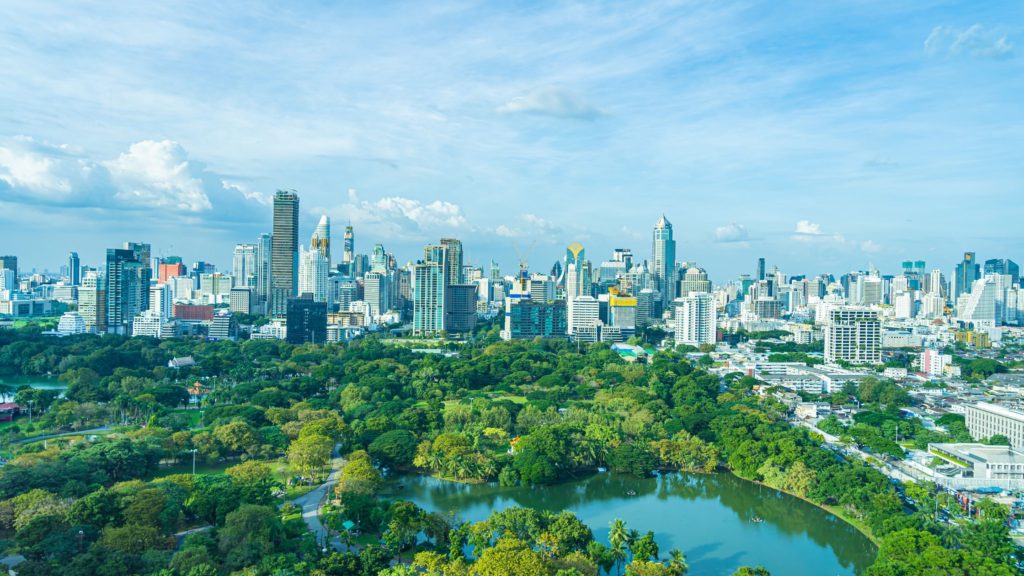
Do you know that if you are living near green spaces like a park and a location with lots of planting can slow down your biological ageing and improve overall health? This was proved in a recent U.S. study published online in the journal Science Advances. It reveals that the individual who lived near the urban green space were biologically 2.5 years younger1 as compared persons who do not have access to it.
What made researchers conclude this? and how does it positively affect our overall health? Let’s find out more about this research.
How crucial is urban green space to our health
We all know how important is green space including parks, green roofs, and community gardens in the urban area. One of the previous research also pinpoints the positive effect of community gardening on our health and overall well-being. It gives us a place to breathe fresh air, walk, exercise etc. It acts like a lungs of the city, however, with shrinking green space it’s affecting our overall health.
The present study is the first to investigate the effect of long-term (20 years) exposure to greenery on our biological ageing. It also aimed to evaluate the role of race, sex, and neighbourhood deprivation as potential modifiers of these associations.
For this, the researchers tried to link exposure to the surrounding greenness to DNA methylation levels in the blood sample of the participants. According to scientists, DNA methylation level is the perfect biomarker of ageing, it gives the signal of progressing age in our body.
In one of my previous articles, I have covered another research paper that uses DNA methylation level to link between weak hand grip to early ageing. Researchers also tried to understand whether the positive health benefits of green space vary with race, sex and socioeconomic status.
Blood samples investigated to record the effect of urban greenery on ageing
For this study, the researchers used data from the CARDIA Study (Coronary Artery Risk Development in Young Adults). CARDIA is a long-term study in which young adulthood participants of 18 to 30 years from 1985 to 1986 were included. It includes over 5,000 black and white adults and aims to identify the factors three decades before the onset of cardiovascular disease in later life.
In the present study, a total of 5115 men and women, aged 18 to 30 years, were recruited and followed up at various time points over 35 years. During this follow-up time, their blood samples were collected and the DNA methylation level was recorded.
The scientists included 924 participants who had complete information on DNA methylation levels. They only included participants who reside near parks or urban greenness. All the participants were followed up for 20 years from the date of recruitment.
The research team assessed exposure to residential surrounding greenness using two methods. Park exposure and surrounding greenness exposure were measured from satellite-based estimation. The park exposure was determined by measuring the distance to the nearest park within 5 kilometres of each participant’s residential location.
Surrounding greenness exposure was estimated using satellite-derived data.
Several covariates were included in the study, such as sex, race, education, body mass index, marital status, income, physical activity, smoking status, neighbourhood deprivation score, and study field centre. These covariates were taken into account to control for their potential influence on the association between greenness and biological age acceleration.
Results highlight the importance of urban greenness
The study result was interesting, let us start with a few statistics related to the participants. The mean age of participants was 45.3 years, with 376 Black participants and 548 White participants. Among the participants, 453 were men and 471 were women. Approximately 54.5% of the participants had exposure to urban green parks within 5 km of their residential area.
Interestingly the exposure to greenness also varied among the different races. Black participants had lower surrounding greenness and a lower percentage of parks within 5 km compared to white participants.
The association between long-term exposure to greenness and biological ageing was examined. The result adds to the already-known health benefits of urban green space. It clearly reveals that having parks and greater exposure to residential-surrounding greenness slow down the age acceleration.
As was pointed out above black participants were lesser exposed to urban green, the result also associates the accelerated biological ageing in black as compared to white.
What does it mean to us?
The author of the paper mentions the importance of green space “Our findings have strong implications for coupling public health intervention and urban planning to expand green infrastructure and maximize its utilization that may be associated with improved life span”, stressing on future research they further added that “Future research exploring pathways with other explanatory factors including residential selection, individual park-use behaviour, and neighbourhood SES is needed for a more comprehensive understanding of greenness and epigenetic ageing.”
Keep Reading: Healthy lifestyle can reduce risk of Dementia |Study
The author is a physiotherapist who has been practising for the last 17 years. He holds a Bachelor's in Physiotherapy (BPT) from SVNIRTAR (Swami Vivekananda National Institute of Rehabilitation and Research), one of the prestigious physiotherapy schools in India.
Whatever he learns dealing with his patient, he shares it with the world through blogs and e-books. He also owns a YouTube channel, "Sunit Physiotherapist" with over 8 lakh active subscribers. Here, he shares everything he gets to learn serving the patient.





